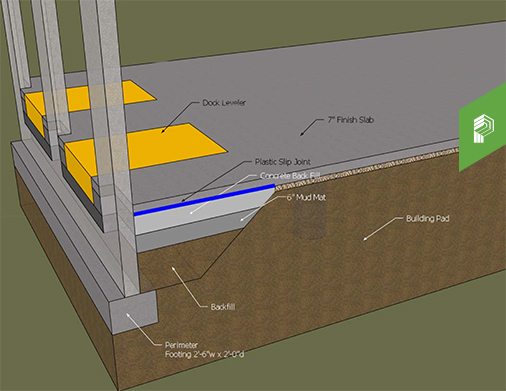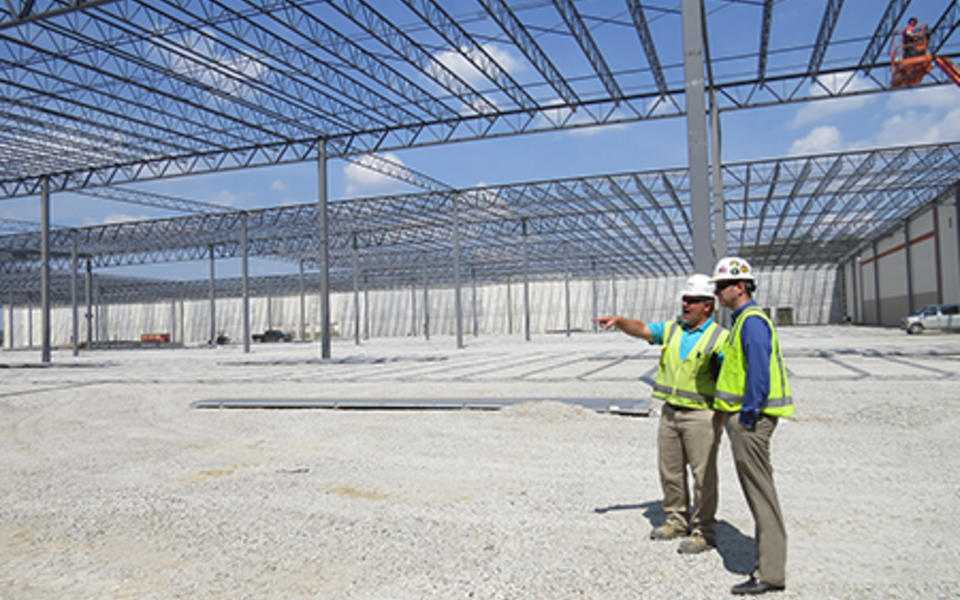Industrial and manufacturing
What do you need to consider when building a top performing industrial facility? This is the third post in a three-part series about important building components to consider when investing in your industrial facility: clear heights and bay spacing, building enclosure and the slab.
Warehouse and distribution developers must balance costs that keep lease rates low with features that attract the best tenants. The quality of the floor remains at the top of developers' lists.
While floor flatness and levelness are important features for the operation of the building, improved performance of equipment and systems means we're no longer living by the strict tolerances we once had to consider. Laser screeds are now equipped with 3D and GPS technology and advanced material handling equipment, like turret trucks, allow for some imperfections in the floor. Still, the floor is one of the most important features distributors consider when it comes to aesthetic and quality.
Several trends are emerging to improve slab performance, and the right solution for the project requires a familiarity with the local market expectations and understanding of site-specific factors, such as local concrete mix designs, local contractor experience, building environment and weather conditions and timing of slab placement.
01. Start with a detailed plan
Many factors influence the quality of the slab so it's important to ensure the pre-installation meeting includes everyone in the process, from the engineer to the finishers, and covers all steps in the process, from verifying sub-grade elevations; to the timing, spacing and depth of the saw joints; to the logistics and timing of concrete deliveries, all of which impact how well the floor will look and perform. One missed step can impact the performance of how the floor cures, which ultimately can affect the slab performance.
02. Invite the experts in
In some cases we have seen benefit consulting with an industrial floor expert to analyze different methods and materials to ensure floor flatness and make recommendations based on the function of the facilities we build. For example, on one warehouse project the developer hired Structural Services Inc. to help our team refine our floor slab pour plan. We also consult with market experts outside of a specific project to stay up to date on best practices and trends in the industry. When Ductilcrete was still new to the Midwest, Pepper hosted the manufacturer, engineers and contractors at an educational session to learn about the material and the best method of installation. We held a similar session with The Face Companies' concrete consultant, which developed the FF and FL measuring system standards, to learn the best practices for achieving floor flatness and to minimize slab curling.
03. Target perfection where it counts
Finally, the most important part of the slab is around the docks, which will crack if not done properly. The right contractor will give special attention to this area. Through our research, Pepper has developed a technique and pour sequence that eliminates cracking at the docks. We use this on all of our projects and incorporate it into our budget upfront because we believe the investment is beneficial to the life of the facility.
Our pour sequence is a combination of ACI (American Concrete Institute) standards and knowledge gained our own personal experiences. Of course, every building is different. The main focus lies in providing a slip joint between the top and bottom slabs around the dock pans. Careful consideration should also be given to control joint placement, depth and pattern around the docks. At times, depending on the type and use of the facility, we also upgrade the steel reinforcing of the speed bay and use dowel baskets at construction joints. The overall key is having as few cracks as possible and achieving the perception of perfection. This process will also result in a more durable slab for increased longevity.
Read more about the recently-completed Hanzo Logistics project, where this process was successfully implemented.
Click here to read the first two installments in this series.





